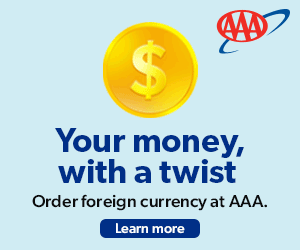It’s up to each one of us to step up and act boldly to help protect the planet in the face of the worsening climate crisis and the many environmental challenges unfolding worldwide, and that includes our travel decisions.
When planning trips, do so through the lens of environmental and community stewardship and giving back to the places you’re visiting. This can include choosing destinations that are championing the transition to sustainable living and selecting accommodations that implement environmentally friendly business practices. It can even involve spending some vacation time learning from or volunteering with local community and nonprofit organizations that give back to the planet and its people.
Sustainable and mindful travel can take on many forms. Here are five family vacation ideas that allow you to give back to the planet while traveling.
Hudson Valley, N.Y.
About 150 miles north of New York City, the Hudson Valley is a designated National Heritage Area. The 10-county region is overflowing with history, nature, farm-to-table food offerings, agritourism, arts and outdoor recreation. Highlights here include President Franklin D. Roosevelt’s home and the Mohonk Preserve with its 70 miles of carriage roads and trails. Of course, you don’t want to miss taking a scenic cruise along the Hudson River.
Communities throughout the Hudson Valley are focused on sustainable progress, with several receiving Climate Smart certifications from the New York State Department of Environmental Conservation. Communities that earned the certification have made important strides on such fronts as shifting to renewable energy and innovative land use.
Visit
The Wolf Conservation Center, in the Hudson Valley’s Westchester County, offers an opportunity to learn about wildlife and support wolf preservation. The nonprofit center is dedicated to helping ensure the survival of wolves, most of which are considered endangered species. There are two ambassador wolves that can be viewed by the public, as well as about 21 Mexican gray wolves and 10 red wolves that reside off the exhibit. Education programs at the center allow visitors to learn about the mythology, biology and ecology of wolves, said Mark Ode, the center’s deputy director.
More adventurous visitors can spend a night sleeping with wolves – a program that attracts visitors from around the world. “The popular nocturnal adventure experience gives guests a chance to camp out overnight with the 30-plus wolves that call the WCC home,” Ode said.
Another local nonprofit, the Hilltop Hanover Farm and Environmental Center offers opportunities to learn about everything from organic composting to starting a backyard garden and the importance of harvesting rainwater. The 400-year-old working farm and environmental center is dedicated to advancing sustainable agriculture. Visitors can meet the farmers, explore forest trails on the property and interact with the farm’s chickens and goats.
Stay
The Mohonk Mountain House is a stunning and legendary resort with a long history of environmental stewardship. Opened by the Smiley Family in the 19th century, the hotel is a Victorian castle located amid 40,000 acres of forest. The hotel offers naturalist-led nature programs for guests of all ages. Newer buildings on the property have incorporated geothermal heating and cooling systems, and its spa building has a green roof garden terrace that helps insulate the building. The hotel also supports many local farms by incorporating the produce into its menus.

Nashville, Tenn.
Nashville is a destination that hardly needs an introduction. Renowned for its music scene, there’s plenty here to entertain even the youngest visitors. Options include trolley tours of the city, visiting the Grand Ole Opry and exploring the unique cars on display at the Lane Motor Museum. There’s also the National Museum of African American Music, which uses interactive technology to educate visitors about more than 50 genres of music.
Equally important, Nashville has been acknowledged as one of the most sustainable cities in the southern United States. Local efforts range from government initiatives that encourage and recognize sustainable practices in the workplace to a Go Green Nashville energy efficiency program.
Visit
The nonprofit organization Friends of Warner Parks is dedicated to preserving and protecting Nashville’s Percy and Edwin Warner Parks. The two popular Nashville parks cover 3,195 acres and host more than 1.5 million visitors annually, said Molly Elkins, director of marketing for Friends of Warner Parks.
The nonprofit’s efforts include trail maintenance and restoration, educational programming and wildlife research. There are also volunteer opportunities that can help support park preservation. Volunteer events vary by season and range from tree planting and invasive plant removal in the fall and winter, to trail maintenance and stream cleanups in the spring and summer.
“If there isn’t a public volunteer opportunity while a family is visiting Nashville, we welcome them to bring a trash bag to the parks and clean up litter and plastics while exploring our trails,” says Elkins. “Any visitor who goes out of their way to clean up the park will have a huge impact on our efforts to maintain and steward this landscape.”
Stay
Located in the heart of the city, AAA Four Diamond Designated 1 Hotel Nashville is a mission-driven property. Its sustainability measures encompass a state-of-the-art recycling program and a relentless focus on minimizing and reducing waste. The property focuses on working with sustainable, like-minded partners in all its operations. There’s even an electric house car available for guest use. The property’s facade is covered by 56,000 plants, has been designed with eco-consciousness in mind – the wall captures CO2 and releases fresh oxygen.
San Juan Islands, Wash.
The San Juan Islands, which are reached via ferry from mainland Washington, showcase Earth’s beauty at its finest. These islands feature rural landscapes, striking shorelines and an abundance of wildlife. One of the primary islands here, Orcas Island, is the location of Moran State Park and its old-growth forest. Visitors can also kayak, hike and indulge in farm-to-table dining throughout the islands.
Island residents are passionate about protecting the fragile ecosystem and every Earth Day, including this year, visitors can join locals in Great Island Cleanups sponsored by the organization Plastic Free Salish Sea. The cleanups take place on Lopez, Orcas and San Juan islands.
Visit
There’s a variety of nonprofit organizations operating throughout the San Jan Islands that are working to protect the planet. On San Juan Island, don’t miss the non-rofit Whale Museum, which promotes the stewardship of whales and the Salish Sea ecosystem through education and research. You can support the museum’s efforts by visiting its gallery and learning firsthand about the whales of the Pacific Northwest. You can adopt an orca through the museum, which provides funds to support orca education and research.
Stay
On San Juan Island’s west side, on Mitchell Bay, Snug Harbor Resort is a favorite among outdoor enthusiasts. The property features upscale cabins and suites with vaulted ceilings and views of the bay. Guests will find complimentary paddle boards, kayaks, canoes and bikes onsite for carbon emissions-free island explorations. The property also implements an extensive list of eco-friendly initiatives including using a reverse osmosis water system to supply 100% of the resort’s water, rather than draining the island’s precious groundwater resources. The resort collects groundwater to handle its landscaping needs as well, and has replaced most lighting with eco-friendly LED lights, which reduce energy consumption.
Santa Monica, Calif.
A famed and family-friendly Southern California beach city, Santa Monica is well-known for its 3.5 miles of beach and the iconic Santa Monica Pier and amusement park (where the Ferris wheel is operated by solar power). In addition to experiencing these top attractions, family visitors can rent bikes to explore Santa Monica’s beachfront bike trail or even book surfing lessons. The open-air Third Street Promenade shopping area is full of entertainment provided by all manner of street performers.
Santa Monica has long been a leader on all things sustainable. In 1994, it became one of the first cities in the country to adopt a Sustainable City Plan that included measurable targets. The plan ensures decisions in the city are always guided by environmental stewardship and with the goal of minimizing impacts on the Earth.
Visit
The award-winning Heal the Bay Aquarium on Santa Monica Pier works to protect the animals living in the bay. The aquarium showcases more than 100 local species and offers hands-on activities, educational programming, animal feeding presentations, and wildlife observation stations. Heal the Bay hosts monthly volunteer beach cleanups that help protect the ocean from pollution.
“While visiting our iconic coastline during Earth Month – or any other time of year – join Heal the Bay to protect our incredibly unique ocean biodiversity,” says Marshlaidh Ryan, Health the Bay’s aquarium director.
Stay
A 77-room boutique hotel, The Ambrose puts sustainability front and center with a variety of green initiatives. That effort dates to at least 2005 when the AAA Three Diamond Designated property participated in Santa Monica’s Sustainable Works Green Business Certificate pilot program. The hotel later earned a Sustainable Quality Grand Prize award from the city and a Green Lodging certification from the state of California. There’s complimentary electric vehicle charging on site and the house vehicle, available to take guests to local destinations, is electric as well.
Sonoma County, Calif.
Legendary for its wineries and abundance of natural beauty, Sonoma County is also leading the way in protecting the planet. Local sustainability efforts include limiting urban development to existing urban boundaries (thus protecting nature and open spaces) and an energy independence program focused on clean energy sources.
Of course, these aren’t the only reasons for family travelers to explore and support Sonoma. Located less than an hour north of San Francisco, Sonoma is a place where visitors can enjoy hiking amid majestic redwoods, collecting seashells along the iconic Pacific coastline or taking in one of the many charming small towns throughout the county.
Visit
Don’t miss Charlie’s Acres Farm Animal Sanctuary, which rescues farm animals that were abused or destined for the food supply chain. The sanctuary was founded by Tracy Vogt, whose goal is to teach people about the beauty and intelligence of such animals. There’s a variety of volunteer and visitation options available, too.
“Volunteers can help with preparing dinners for our rescue pigs, resetting barns and sorting through our donated produce,” said Vogt.
Even if you don’t have time to volunteer, it’s still possible to spend quality time with the rescued farm animals. “Short-term visit options include general tours and private tours where visitors can rub some pig bellies, mingle with our friendly goats, and feed our cows,” said Vogt. “This option is super popular with families and tourists.”
And did we mention the goat yoga and sheep meditation tours? Participating in any of these activities helps to support the nonprofit and its beloved rescued animals.
Stay
The Stavrand is a boutique, 21-room retreat located amid the redwoods of the Russian River Valley. The property focuses heavily on minimizing its ecological footprint, while also supporting the local community. This effort ranges from composting and recycling to integrating local ingredients into its menu and making conscientious purchases. Family-friendly highlights include lawn games, bikes and kayaks, s’mores kits and a lending library with board games.
AAA Travel is now offering exclusive sustainable travel itineraries to Italy and Ireland. Reach out to a AAA travel advisor to learn more.
AAA’s sustainable travel series is written in partnership with Kind Traveler, a women-and-veteran-owned sustainable travel platform empowering travelers to make a positive impact in local communities, and contributing writer, Mia Taylor.














